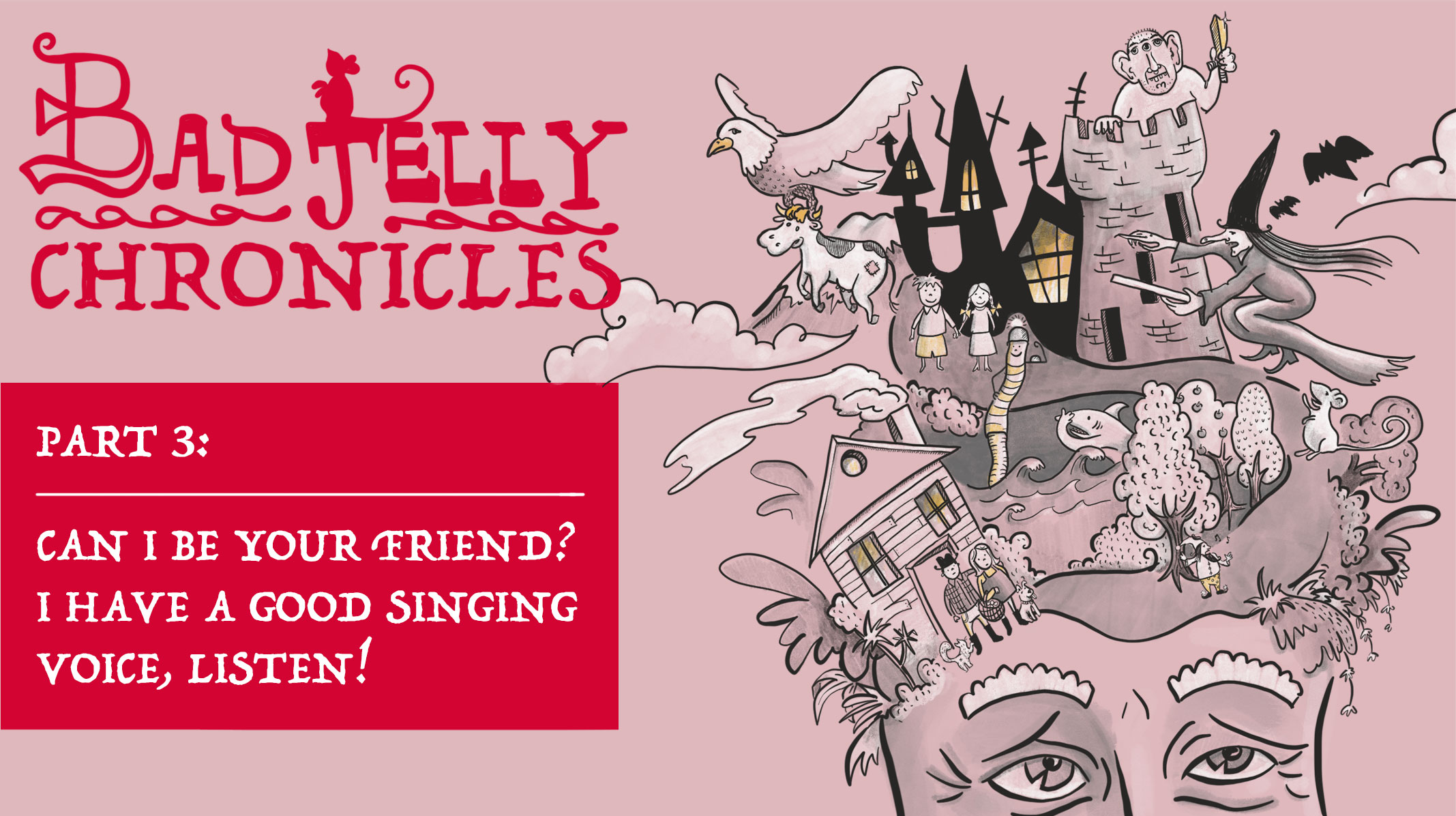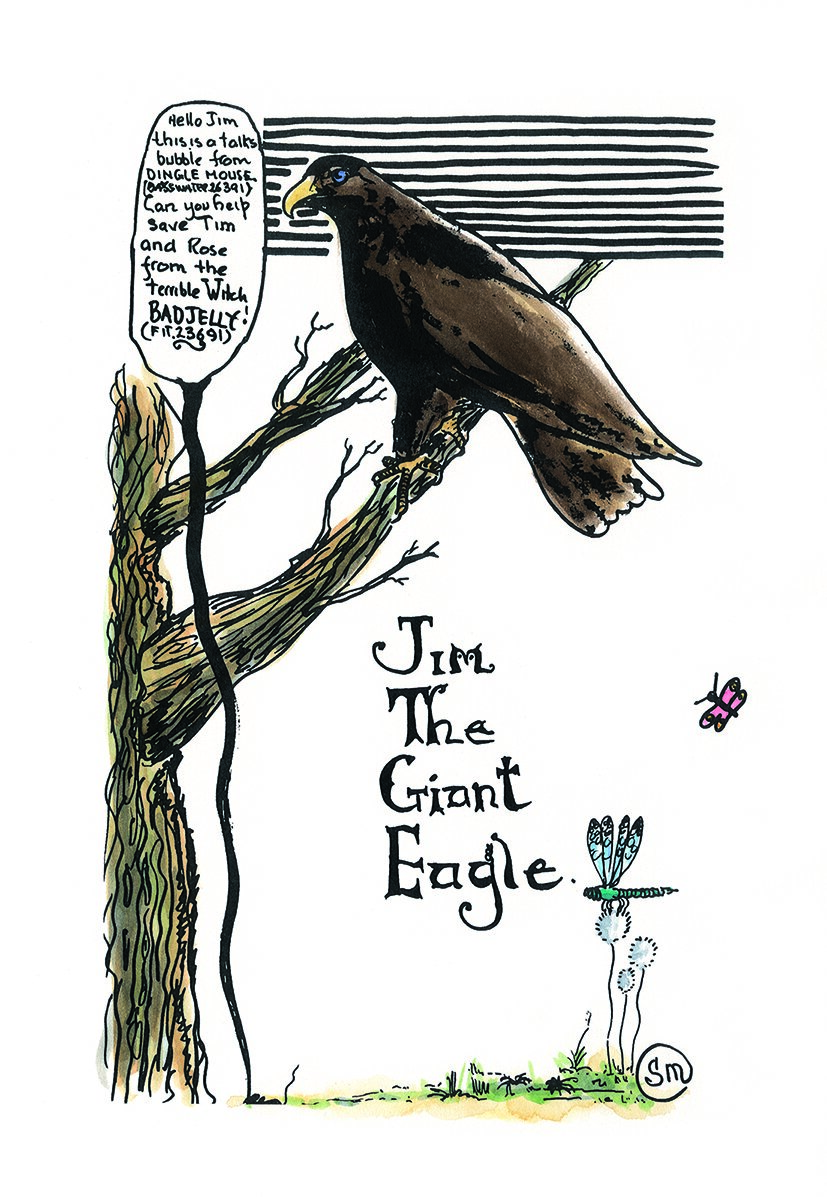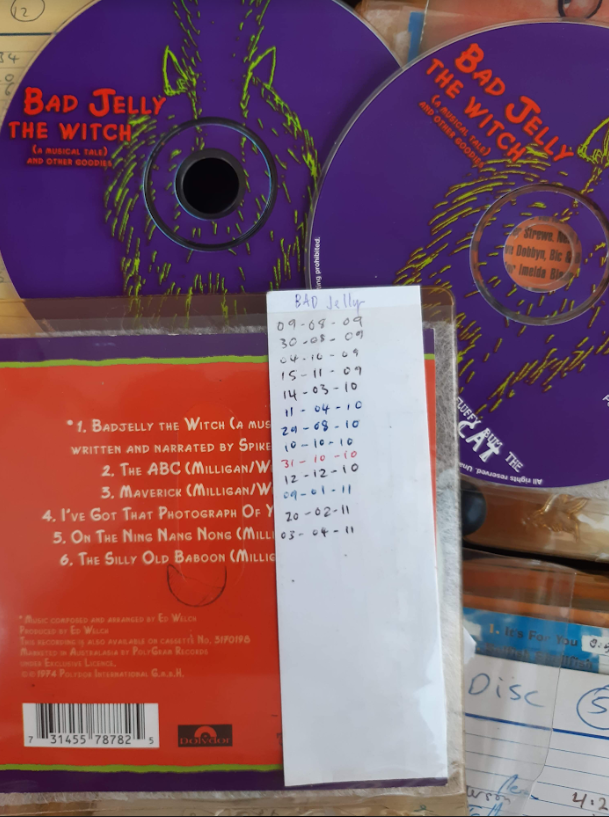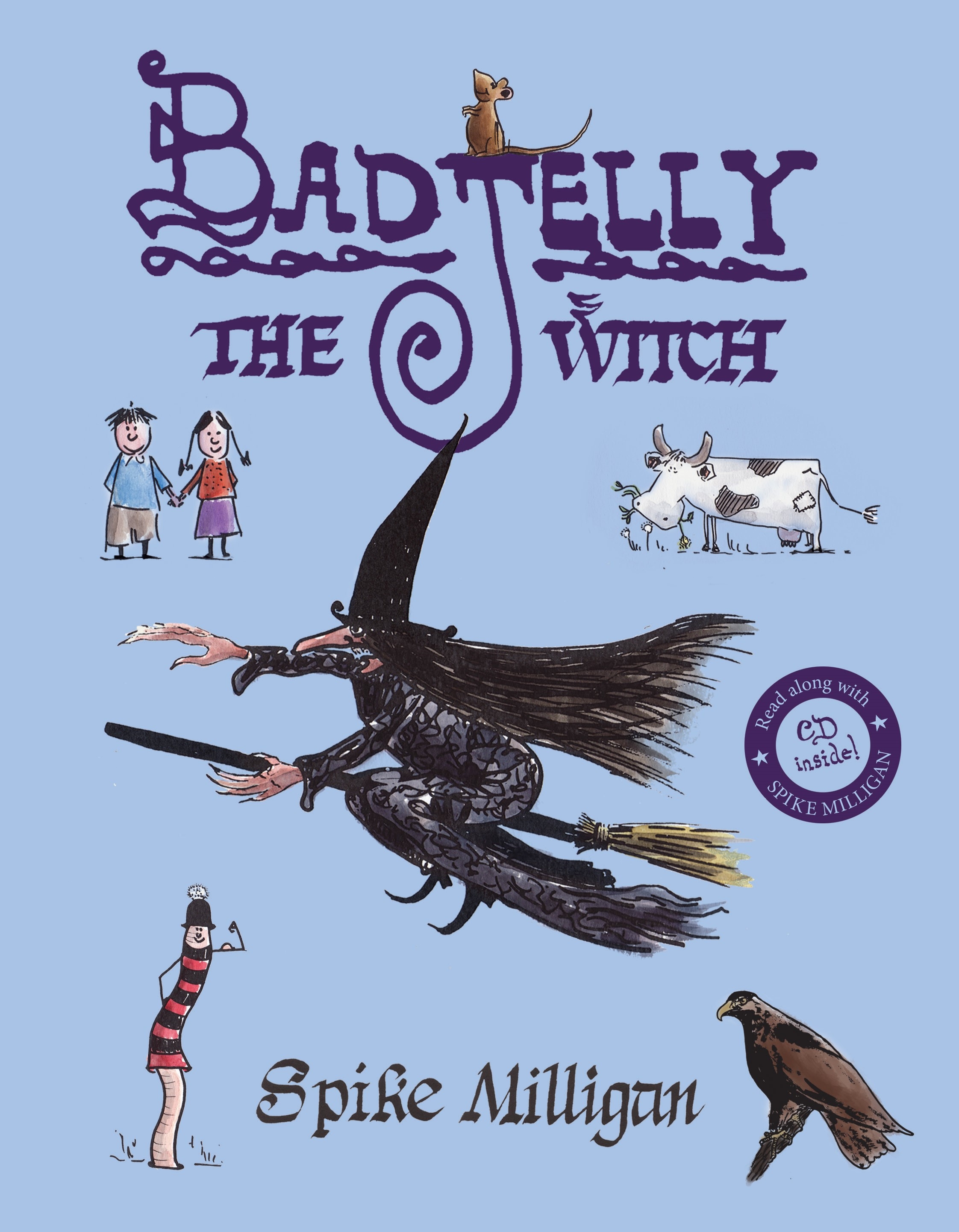How New Zealand developed an obsession with Spike Milligan’s beloved baddest witch in all the world.
In this five-part series, Gemma Gracewood adventures through the many iterations of Spike Milligan’s Badjelly the Witch to find out why New Zealand loves her the most, and why the U.K. might finally be ready to embrace their long-neglected wickedest witch. (Read Episode Two here)

If you had a record player in your house in the 1970s and 80s, then you might have been privileged enough to own the Badjelly the Witch vinyl. Most of us, on the other hand, had to tune in to Tim and Rose’s adventure on the radio. Many local stations championed the record: Radio Windy in Wellington, 2ZA in Palmerston North. Request shows across the nation were swamped with Badjelly fans. But the name many of us remember was Dick Weir’s.
Between 1974 and 1977, Weir hosted the groundbreaking Storytime show, which aired at 7.20pm on the commercial ZB network. It’s here that the venerated broadcaster first aired Badjelly the Witch. Then, from the late 1970s through until 1988, Dick commanded the wildly popular Dick Weir Sunday Show, a morning programme that was syndicated right across the ZB network (back then, commercial media couldn’t air ads on Sundays, so the scope for children’s content was wide). Badjelly the Witch was the main attraction of that show, too.
‘It was the most brilliant piece of radio that had ever been produced,’ Dick says. ‘It was, it is, anarchic. Spike Milligan had a genius for being able to reach through into a child’s mind in a way that very, very few people ever have. He had no artifice, he was unpatronising in his telling, he was a true storyteller for children.’
‘Spike Milligan had a genius for being able to reach through into a child’s mind in a way that very, veryfew people ever have.’
In our memories, Badjelly was on every weekend, and it felt like a personal affront when she wasn’t. In reality, Dick used the record judiciously in order to advance his own storytelling agenda. ‘My ambition was to broaden the base that we had of American and British-produced stories so that we had more New Zealand-voiced stories, and even New Zealand stories. It coincided with a time when publishers in New Zealand were starting to publish more and more New Zealand material.’ (A radio version of Patricia Grace’s The Kuia & the Spider was an early local adaptation he is hugely proud of.)
Dick’s grand plan was ‘slightly undone’ by Spike Milligan, ‘because Badjelly was so, so popular. People wanted it every week. So what I did was compromise. I thought well, for this one recording, I shall definitely repeat it, at least 15 or 16 times a year, and I was rewarded as a result by having lots of people tune in.’
Dick won’t take any of the credit for Badjelly’s runaway success in New Zealand. It’s all writer-performer Spike Milligan’s and composer Ed Welch’s genius, he insists. ‘That beautiful opening is just so gorgeous. That opening music, that repetition element is so important with children. Yes it was silly, yes it was funny, yes it was exciting, but the real thing was something to do with his humanity and his personality and his warmth.’
Nevertheless, I press, Weir kept playing it, helping to cement Badjelly’s place in our memories. Yes, Dick agrees, but only because her popularity shored up an ever-growing audience for his greater goal: that of elevating New Zealand children’s literature. ‘I never abandoned Badjelly the Witch, because I always knew it was my piece of gold in my pocket.’
‘I never abandoned Badjelly the Witch, because I always knew it was my piece of gold in my pocket.’
Dick had a chance to meet Spike, just the once. Milligan visited New Zealand on the regular after his wartime best friend Harry Edgington moved here in 1963, settling in Wadestown, where there is a Spike Milligan Corner next to the library. These visits played their part in Spike’s enduring popularity here; we’re suckers for anybody who likes New Zealand. On one visit, he even took the time to get behind the growing anti-nuclear campaign, and I’ve been told lovely stories of how he personally helped aspiring New Zealand artists make London entertainment industry connections.
Harry Edgington had been the inspiration for the Goons’ ‘Ying Tong Song’, after Peter Sellers mucked around with his surname. Inseparable during WWII, Spike and Harry remained besties; hundreds of letters passed between them over the years. (Spike also had a close relationship with Australia: his parents Leo and Florence and brother Desmond had emigrated there. Desmond’s son Michael and Spike’s eldest daughter, Laura, are the Australian Milligans now. Laura lives in Sydney with her family, who now include Spike’s first great-grandchild, Knox.)
On one of his trips downunder, Spike popped into Wellington’s Broadcasting House. Dick was there, but in classic Kiwi style, he didn’t push for a hello. ‘I never spoke to him or met him, but I do remember him wearing a complete outfit of blue denim, which we’d never seen in Wellington before.’ Dick’s ZB programme ended in 1988 when commercials came to Sundays across New Zealand’s media. He moved across to non-commercial National Radio – now RNZ National – to co-host Ears with Prue Langbein, where he continued his focus on New Zealand children’s stories.
‘I never spoke to him or met him, but I do remember him wearing a complete outfit of blue denim, which we’d never seen in Wellington before.’
‘I used to listen to Dick Weir and Prue Langbein on Ears. They read out one of my letters on the radio — it was about climbing trees — and it was the most powerful thing.’ That’s Finn McCahon-Jones, who started hosting 95bFM’s The Kids’ Show in 1994 when he was just 14 years old.
Finn soon faced the same conundrum as Dick: everybody wanted Badjelly, which takes up 23 minutes of a two-hour show. If he played it at 7.00am, the kids who woke at 8.00am would phone up begging for it. ‘Seriously, how many shows I played it at the beginning and at the end of the show to appease those listeners!’ (Revealingly, nobody would ever phone up while Badjelly was playing.)

‘For the first 15 years of doing the show I’d play it every single Sunday, and then after that I’d play it every second Sunday. Not because I was sick of it, but because there is so much good stuff out there.’ To keep track, Finn took to writing the last date he played it on a piece of paper that he’d leave in the CD sleeve. These days, there’s an abundance of top New Zealand content to fill a playlist with. You’d think Badjelly would have her work cut out to stay relevant, but there’s no denying the power of the witch: the current hosts of The Kids’ Show, Lee and a new young Finn, still give her a spin every few weeks.
One thing that always tickled McCahon-Jones during his time on the show was the design of the CD, which featured Spike’s illustration of the rear view of Fluffy Bum the cat. ‘You have to put your finger into Fluffy Bum the cat’s bumhole to take it out of the CD cover,’ he laughs. ‘Real poo-poo humour. Damn, Spike, you got me. I’m up at bFM putting my finger into the cat’s bottom.‘

That CD release was the idea of Nathan Graves, who was once a wee lad in 1970s Gore, toddling down the hallway on frosty mornings with the transistor radio to listen to Badjelly the Witch in his bedroom. Nowadays he’s a music industry figure in the UK, via a stint at Polygram in New Zealand, where, in the late 1990s, he noticed that Badjelly the Witch was — still! — a regular in the Cassette Top 20 chart. The vinyl had been deleted (music industry speak for being out of print), and nobody had released it on CD.
‘So we put it out on CD,’ Graves recalls. ‘We made some small-sized T-shirts for kids, with Fluffy Bum the cat, Lucy the cow. All the shops took the CD, and it went platinum in about six months. I was thrilled.’
‘We made some small-sized T-shirts for kids, with Fluffy Bum the cat, Lucy the cow. All the shops took the CD, and it went platinum in about six months. I was thrilled.’
‘Of course it went platinum,’ says Finn, confirming the pre-eminence of the recorded version. (Platinum status in New Zealand is 15,000 copies). ‘I don’t know the book at all. I only know the recorded version.’
It’s fascinating that the book of Badjelly the Witch really only got its legs and took off running after Spike and Ed made their famous audio recording. Nowadays, the stockroom at Penguin NZ has plenty of supplies of Badjelly the Witch, and are pleased to note that sales always — ho, ho, ho — spike at Christmastime. ‘Of course it’s been in stock consistently; bloody hell, we couldn’t be out of Badjelly!’ laughs Penguin’s Head of Publishing, Claire Murdoch.
Except for the fact that, at one point — gasp! — New Zealand was out of Badjelly.
READ EPISODE FOUR: How a Wellington bookseller got Badjelly the Witch back in print after Penguin UK told him it was — wait for it — unsuitable for children.


Gemma Gracewood
Gemma Gracewood is a writer, producer and director who peddles in delight. A fifth generation Pākehā New Zealander, she has toured the world in a ukulele orchestra, made award-winning shows about chain-reaction machines, and is currently the editor of Letterboxd. Her favourite saying used to be ‘you can sleep when you’re dead!’ but now she has a four year old and that’s not funny shut up.



